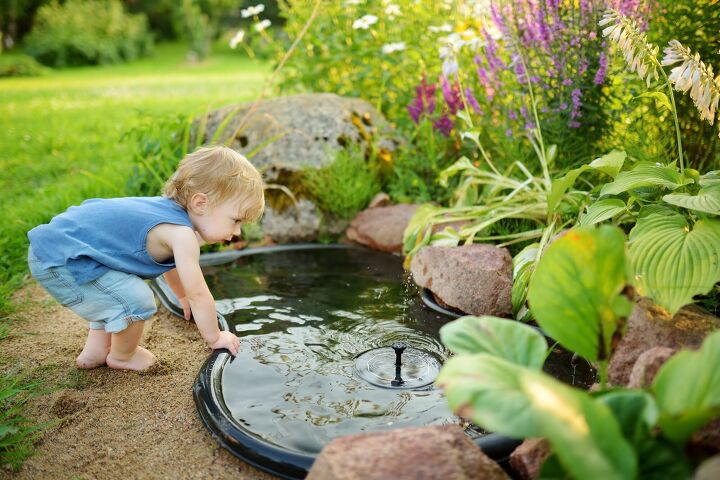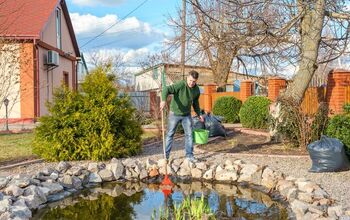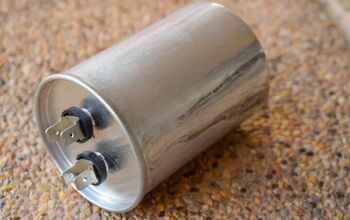How To Keep A Backyard Pond Clean

A pond in your backyard can be a fun feature, adding beauty and a relaxing, calming atmosphere. But if your pond ends up grimy, full of algae, or otherwise yucky, it’s anything but beautiful. So, how do you keep a backyard pond clean so it’s worth having as part of your oasis?
Proper filtration is essential to keeping a backyard pond clean. Add beneficial bacteria to pond water, and use items like UV clarifiers to help combat various algae types. Remove debris using a skimmer or pond vacuum as soon as it accumulates. Feed pond fish high-quality food and choose a proper assortment of aquatic plants to help maintain your pond.
Once you know how to keep your backyard pond clean, keeping it that way is relatively easy. However, it does take routine care and upkeep to ensure your pond doesn’t start slipping back into muckiness.
What Can I Put In My Pond To Keep The Water Clean?
An easy way to maintain clean pond water is by using various additives designed to eradicate the things that make ponds gross. For example, adding good bacteria to your pond removes the green sludge making your pond look more like a horror movie than a blissful retreat. The bacteria essentially eat the excess nutrients and organic matter that make your pond slimy and grimy.
When using pond tablets, make sure to use the appropriate amount for your pond size. You’ll need to know roughly how many gallons of water are in your pond to calculate the correct number of packs. Then, follow the directions on the product.
You can buy commercial pond cleaning products at home and garden centers and home improvement stores. Pond cleaners are also available online.
How Do I Keep Algae Out Of My Pond?
Algae typically needs sunlight to grow, so planting aquatic plants can help block the sun and reduce algae growth. If your pond already has an algae bloom, remove the surface algae using a skimmer.
Filtration is also crucial to clean water. Adding a fountain feature can help keep the water circulating (which has the added bonus of keeping mosquitoes away).
If you keep fish in your pond, be thoughtful with the fish food you use. Choose high-quality options your fish can fully digest so they don’t pass as many nutrients into the water.
Depending on the type of algae, UV clarifiers can help get rid of suspended algae in the water. The UV light keeps single-cell algae from reproducing. Then you get to say goodbye to green water.
How To Clean Pond Water With Fish In It?
When you have fish, you clean your pond using the same practices, like UV clarifiers, bacteria packs, etc. However, it becomes vital to read product labels carefully. Ensure you choose options safe for use with fish, aquatic plants, and other animals you might keep in your pond.
How Do I Keep Pond Water Clear Naturally?
If you prefer a more natural approach to clear pond water, try barley straw. It breaks down in the water, releasing a component similar to hydrogen peroxide, which kills pond algae.
Of course, there’s more to do besides whatever you put in your water, whether barley straw, pond tablets, or other products. There are a few other tips to keep in mind if you want to maintain a clean backyard pond.
Tips For Keeping Your Backyard Pond Clean
Want to keep your backyard pond looking beautiful all year round? Keep these helpful tips in mind when planning your pond-cleaning routine.
1. Buy The Right Size Pond Pump
Ideally, your pond water should fully circulate at least once every hour. Choosing the right size pump for your pond is vital to achieving this goal. It’s also important to ensure the skimmer remains clear, so it doesn’t end up blocked by debris and unable to function.
2. Maximize Pond Filtration
Your pond’s filter must also be appropriately sized for your pond. Operate and clean the filter according to the instructions, and replace the filter as needed.
If you’re unsure about what size you need, consult with a professional pond cleaner or specialist. In many cases, up-sizing your filter will ensure it can handle the full capacity of your pond.
3. Don’t Keep Too Many Fish In Your Pond
A general rule of thumb for how many fish in your pond is 1 inch of fish per 10 gallons of water. Amounts over this lead to overpopulation, which causes an overload of fish poop. The excess waste throws off the balance in the water.
4. Pay Attention To Fish Food
In addition to choosing high-quality fish food, don’t overfeed your fish. Any uneaten food ends up decaying in the pond, throwing off the nutrient balance in the water.
It’s also helpful to choose food that stays afloat instead of sinking to the bottom of the pond. This way, if your fish don’t eat it, you can quickly and easily skim it out with a net.
5. Strike A Balance With Pond Plants
Aquatic plants are beneficial to the overall health and look of your pond and the life in it. However, you can have too much of a good thing. It’s essential to maintain a good balance of plant life so your pond doesn’t get too cold and shady.
If you have too many plants, it can lead to oxygen loss in the water. Too few plants, and there could be too much sun heating things up and bolstering algae growth.
The right balance of plants will depend on your area and the typical temperatures. Use a good pond thermometer to monitor your pond’s water temperature.
6. Clean Pond Debris Quickly
As soon as you notice debris in your pond, remove it using a skimmer or pond vacuum. Allowing leaves, twigs, and similar matter to remain in your pound gives them more time to decay. Decaying matter mixed with fish food, waste, etc. leads to spikes in your pond’s ammonia levels.
High ammonia levels are harmful to fish and other aquatic animals. If you suspect high ammonia, use a test kit to determine if you need to treat your pond with a neutralizer.
7. Maintain A Healthy Pond Temperature
The temperature of pond water plays a large role in the overall quality of the water. It’s especially critical when it comes to the health of your fish and plants. In summer, maintain a temperature of around 75 degrees Fahrenheit.
Otherwise, the water won’t have adequate amounts of oxygen for your fish. If you live in an area with extreme heat, using an aerator can help your fish breathe.
Another way to help maintain pond water is by using plants that help shade your pond. Not only does this help maintain water temperature, but also blocks sunlight that encourages algae growth.
8. Be Thoughtful Choosing Pond-Cleaning Products
Before you buy the first pond-cleaning product you see, think about your unique situation. Do you have fish? What types of plants are in your pond? Read labels carefully and make sure the product is the right fit for your pond.
Maintaining Your Backyard Pond
Don’t let the idea of cleaning and maintaining a backyard pond deter you from getting one. As long as you do the proper work up front, like choosing the correct pump and filter system, you have a good foundation for a clean pond. Keep your fish population in check, incorporate aquatic plants, and remove debris ASAP.
Proper filtration, along with a product like barley straw or pond tablets, works well in tandem to fight algae and keep it at bay. A pond makes a lovely addition to your outdoor space. With regular TLC, you can bid farewell to pond scum and enjoy your backyard water feature without a lot of hassle.
Related Guides:

Stacy Randall is a wife, mother, and freelance writer from NOLA that has always had a love for DIY projects, home organization, and making spaces beautiful. Together with her husband, she has been spending the last several years lovingly renovating her grandparent's former home, making it their own and learning a lot about life along the way.
More by Stacy Randall



























